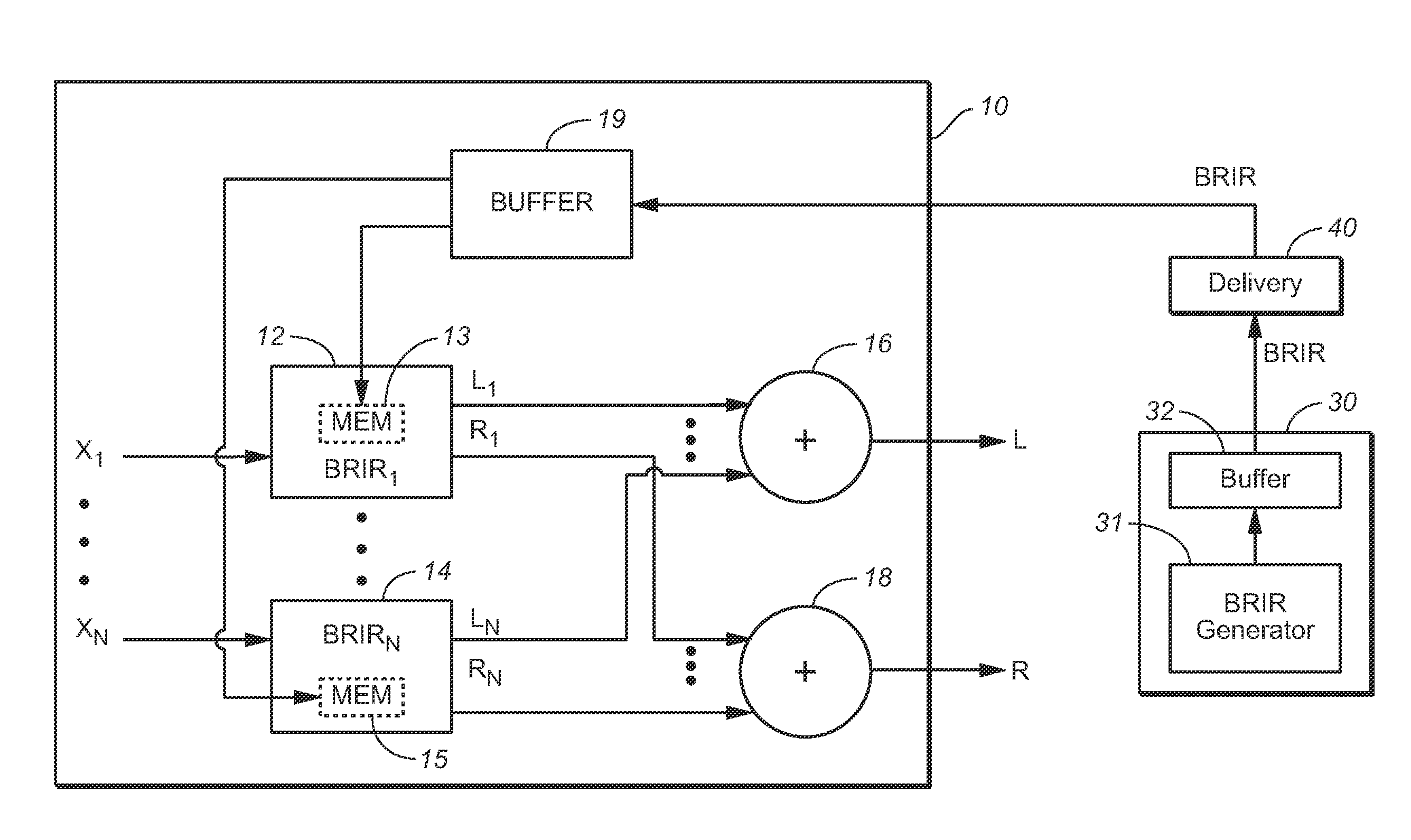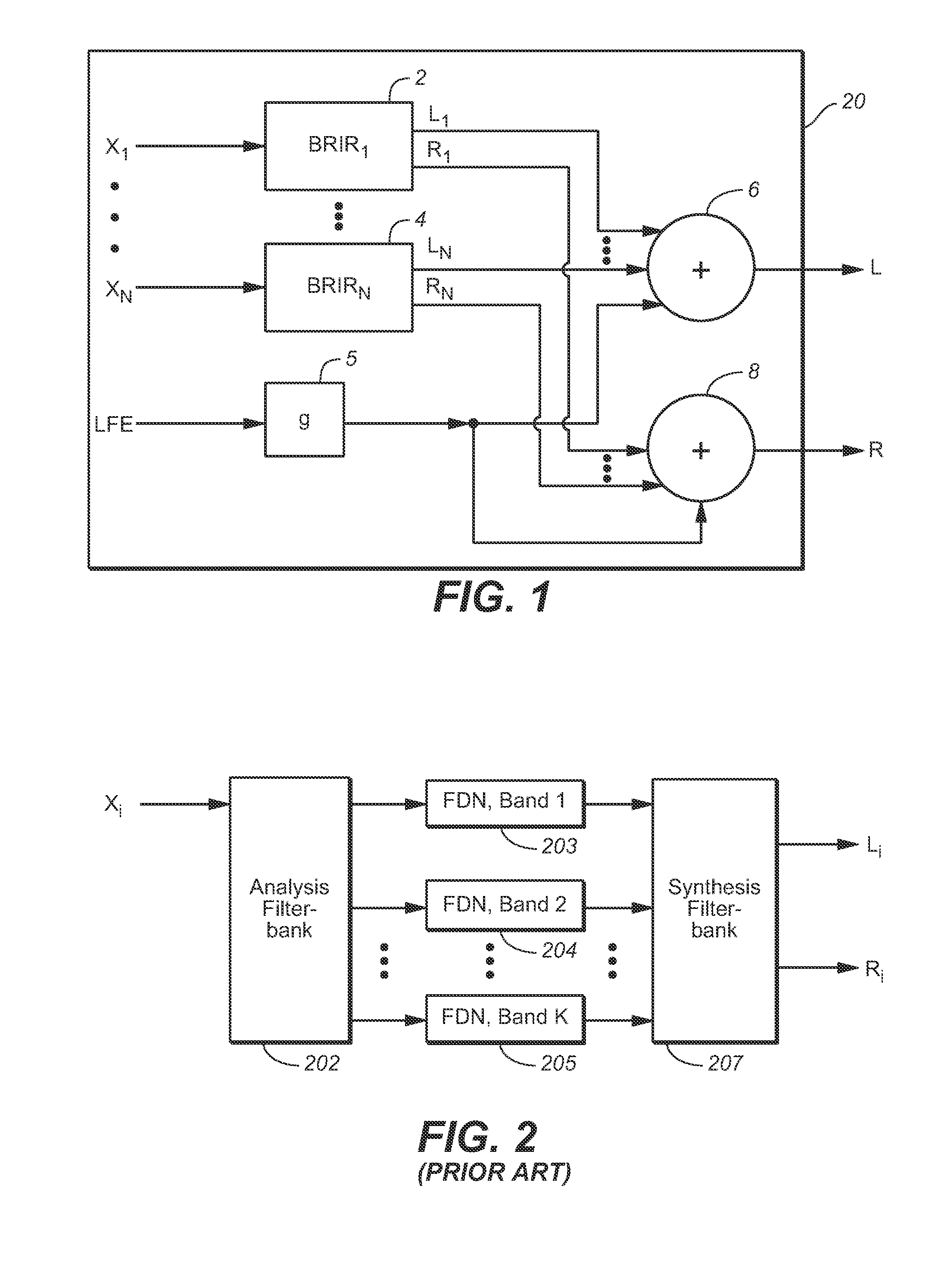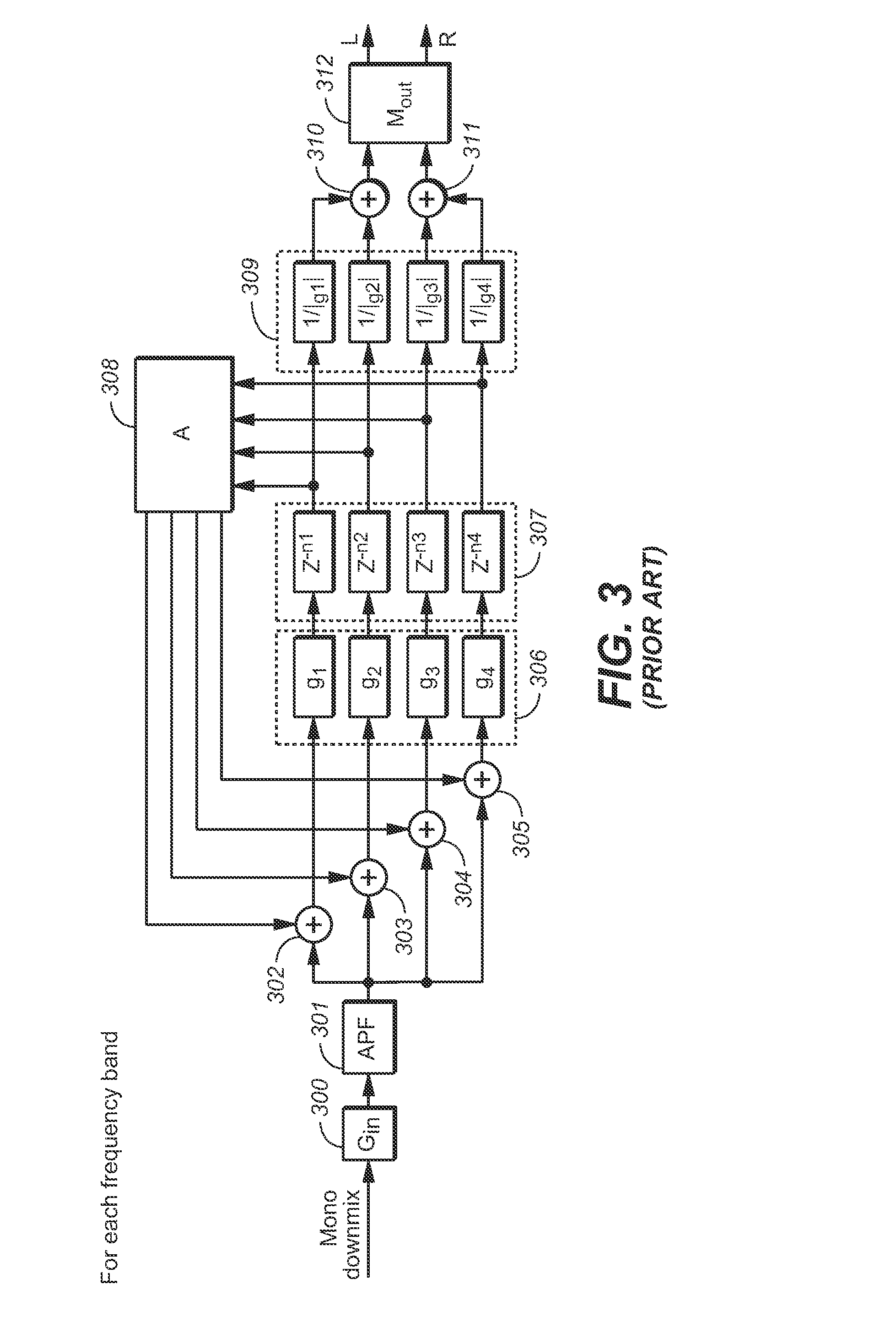Methods and systems for designing and applying numerically optimized binaural room impulse responses
a binaural room and impulse response technology, applied in the field of headphone virtualization methods, can solve the problems of limited audio experience of traditional headphone listening, insufficient or robust cues regarding source distance, and significant acoustic path differences, so as to avoid the cost of audio distortion, improve spatial perception, and maintain the natural appearance of the rendered signal
- Summary
- Abstract
- Description
- Claims
- Application Information
AI Technical Summary
Benefits of technology
Problems solved by technology
Method used
Image
Examples
Embodiment Construction
[0073]Many embodiments of the present invention are technologically possible. It will be apparent to those of ordinary skill in the art from the present disclosure how to implement them. Embodiments of the inventive system, method, and medium will be described with reference to FIGS. 1, 4, 5, 6, 7, and 8.
[0074]As noted above, a class of embodiments of the invention comprises audio processing units (APUs) configured to perform any embodiment of the inventive method. In another class of embodiments, the invention is an APU including a memory (e.g., a buffer memory) which stores (e.g., in a non-transitory manner) data indicative of a BRIR determined in accordance with any embodiment of the inventive method.
[0075]System 20 of above-described FIG. 1 is an example of an APU including a headphone virtualizer (comprising above-described elements 2, . . . , 4, 5, 6, and 8). This virtualizer can be implemented as an embodiment of the inventive headphone virtualization system by configuring ea...
PUM
 Login to View More
Login to View More Abstract
Description
Claims
Application Information
 Login to View More
Login to View More - R&D
- Intellectual Property
- Life Sciences
- Materials
- Tech Scout
- Unparalleled Data Quality
- Higher Quality Content
- 60% Fewer Hallucinations
Browse by: Latest US Patents, China's latest patents, Technical Efficacy Thesaurus, Application Domain, Technology Topic, Popular Technical Reports.
© 2025 PatSnap. All rights reserved.Legal|Privacy policy|Modern Slavery Act Transparency Statement|Sitemap|About US| Contact US: help@patsnap.com



